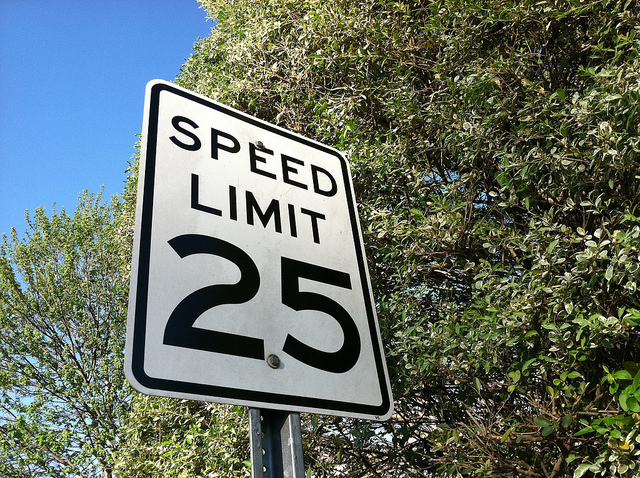
Image License: http://www.flickr.com/photos/chadelliott2012/5659144073/
For some of us, speeding isn’t a matter of outright defiance, or even an urge to get somewhere faster. For some, it’s simply a matter of habit. As a young driver, you got into the habit of driving a little bit over the speed limit. You may have been lucky, and never received a ticket, thereby reinforcing that behavior.
Jump forward a few years, and you’ve discovered that there’s a downside. Some states and many municipalities are relying increasingly on the revenue generated from traffic tickets in order to keep their government entities running. As a habitual speeder, you’re finding yourself facing down a radar gun more than once. After a few infractions, you can be looking at some serious consequences.
Fortunately, there are some things you can do to break that bad habit and reign in your driving techniques. Here are some techniques you can try:
- Use your cruise. Cruise control is the habitual speeder’s friend. When you’re on a highway, set your cruise control to just under the speed limit. When you need to slow down for another vehicle or speed up to pass, make sure you reset your cruise control afterwards. Avoid the temptation to increase the cruise control speed.
- Discover the consequences. Ideally, you’ll break the speeding habit before you wind up with a stack of speeding tickets and fines. Spend some time investigating the speeding laws and fines in your state. You’ll be surprised to see just how much of a penalty you could be facing. Consider writing the amount of the lowest fine – usually $100 or more – on a post-it note. Stick that post-it not to your dash board, right next to your speedometer.
- Educate yourself on the dangers of speeding. Speeding doesn’t just cost money. There’s a reason that it’s illegal – beyond just a money grab by state and local governments. Accident rates are higher, and fatalities are more common when speeding is involved. Do a little bit of statistical research, and you’ll begin to see just how much safe it is not to speed.
- Mark your speedometer. Consider using a bright-colored permanent marker to highlight the speed limit on your car. While this won’t help you if you’re in an area where the speed limit is lower than the usual maximum, it will help you on those long journeys.
- Put technology to work for you. There are now on the market today devices that you can install in your car that will prevent you from speeding without activating an override. They use GPS technology to actually throttle your engine, so that if you’re trying to go faster than the speed limit in a given location, your car will actually prevent it. Most of these technological solutions have a failsafe of sorts that will allow you to accelerate in an emergency, so as not to create yet another potential traffic risk.
- Pay attention at the pump. While it varies from one vehicle to the next and one driver to the next, the fact of the matter is that speeding uses more gas than following the speed limit. With gas prices hovering between $3 and $5 per gallon domestically for the past couple of years, you could literally be talking about hundreds of dollars in savings, just by laying off the gas pedal. You might even consider installing an economy device that lets you know what kind of mileage you’re getting at any given moment, and that can help you develop driving habits that use less gas.
- Toss out that radar detector. For some people, buying a radar detector is simply admitting defeat. You’re accepting the fact that you’re going to speed, and you’re trying to limit the damage by identifying when you’re most likely to get a ticket. This is simply enabling you to speed. If you’re serious about breaking the speeding habit, turn off the radar detector. You’ll be surprised just how quickly you find yourself driving under the limit.
Driving habits are like any other habit. It takes time to make them, and it takes time to break them. Breaking the speeding habit will save you money in the form of lower gas costs and the potential to avoid speeding tickets. It could also help you to avoid an accident.
Try some of these techniques today. Before you know it, you’ll be that law-abiding citizen in the “slow lane” with a smile on your face and not a care in the world.
Image Credit: Creative Commons – http://www.flickr.com/photos/chadelliott2012/5659144073/sizes/m/in/photostream/
Scott Desind
Latest posts by Scott Desind (see all)
- How to Request the County Seat and Fight Your California Traffic Ticket - May 21, 2023
- Don’t Even Touch That Cell Phone - July 13, 2022
- Innocent Until Proven Guilty - March 2, 2020

